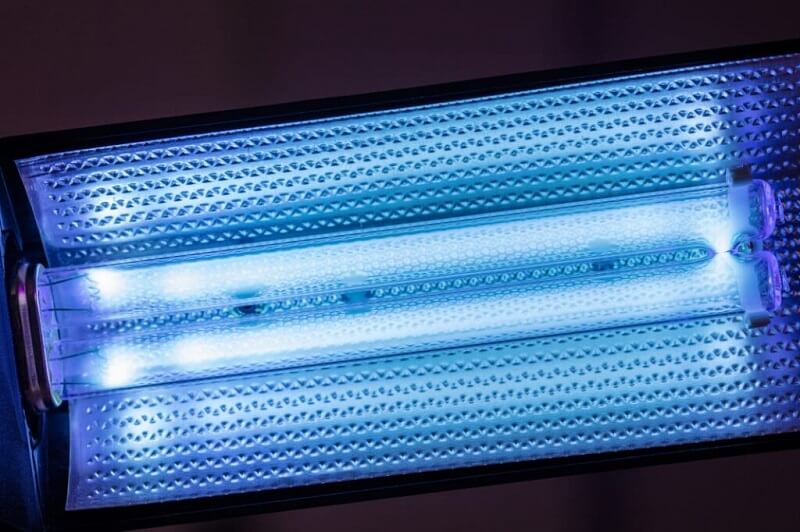A Biased View of Uvc Light
A Biased View of Uvc Light
Blog Article
The 8-Minute Rule for Uvc Light
Table of ContentsNot known Details About Uvc Light Our Uvc Light Statements9 Easy Facts About Uvc Light DescribedThe Best Guide To Uvc LightNot known Facts About Uvc LightThe Best Strategy To Use For Uvc Light
A new type of ultraviolet light that might be safe for people took much less than 5 mins to reduce the level of indoor airborne microorganisms by greater than 98%, a joint research study by researchers at Columbia University Vagelos University of Physicians and Surgeons and in the U.K. has actually discovered. Even as germs proceeded to be splashed right into the area, the degree remained very reduced as lengthy as the lights got on.However previously these research studies had only been conducted in small speculative chambers, not in full-sized rooms imitating real-world problems. In the present research, scientists at the University of St. Andrews, College of Dundee, University of Leeds, and Columbia University tested the efficacy of far-UVC light in a large room-sized chamber with the same ventilation price as a normal office or home (about three air changes per hour).
The effectiveness of various methods to lowering indoor virus degrees is usually measured in regards to equal air changes per hour. In this research study, far-UVC lights generated the equivalent of 184 equal air exchanges per hour. This exceeds any kind of various other strategy to sanitizing busy interior rooms, where 5 to 20 equal air modifications per hour is the most effective that can be achieved virtually.
How Uvc Light can Save You Time, Stress, and Money.

The main parameters of UV-C sanitation are wavelength, dose, relative humidity, and temperature. There is no consensus regarding their optimal worths, however, as a whole, light at a high dosage and a spectrum of wavelengths including 260 nm is chosen in an environment at area temperature level with low loved one humidity. This light can be created by mercury-vapour, light-emitting diode (LED), pulsed-xenon, or excimer lights.
UV-C disinfection systems have promising features and the prospective to boost in the future. UV-C sanitation should presently be taken into consideration for low-level rather than high-level disinfection.
An additional application arose in 1910 when UV light was made use of to decontaminate water. Nowadays, UV light is made use of for water, air, food, surface area, and clinical devices sanitation.
How Uvc Light can Save You Time, Stress, and Money.
DNA, RNA, or healthy proteins of a micro-organism absorb UV light, with a peak absorbance around 260 nm [6] This leads to the interruption of DNA or RNA, leading to the inactivation of the micro-organism. UV-C-induced DNA disturbance usually is composed of the bonding of 2 adjoining thymine (or cytosine) bases as opposed to the standard linking of a base with its complementary base upon the various other strand.

The UV-C area is used for disinfection however there is no agreement on the exact optimal wavelength. Light at 260 nm can cause the most disruption. Numerous micro-organisms are most prone to somewhat different wavelengths.
How Uvc Light can Save You Time, Stress, and Money.
On the various other hand, it has technological implications since the overall power of the light beam of light is then split over all existing wavelengths. A micro-organism that is susceptible to 254 nm light will be inactivated more by a lamp that sends out exclusively light at 254 nm than a lamp that produces a wavelength spectrum at equal complete power.
Direct exposure times of 1045 min for area sanitation and 25 s to 5 minutes for medical tools were encountered in literary works.
Further, the output of a lamp lowers gradually, so it is suggested to determine the dosage at the end of light life, which is rep of a worst-case situation. The dosage also influences the quantity of photoreactivation. Quek et al. discovered that the portion of photoreactivation lowered from 5.31% to 0% for a rise in dose from 1.6 to 19.7 mJ/cm2 [8]
Zhang et al. observed an adjustment in UV irradiance of 34% when the RH boosted from 50% to 90% [18] The quantity of RH influence on UV performance relies on the here and now micro-organism and is a lot more apparent for germs than for viruses [16] The impact of temperature level depends on the light resource.
Facts About Uvc Light Revealed


This is called far UV-C technology and is a reasonably brand-new disinfection approach with minimal knowledge about its effectiveness. This makes it riskier to completely count on this innovation for disinfection in the medical facility and it is therefore not widely utilized [21] Nevertheless, it also has benefits such as a minimized threat for use near individuals because of a reduced penetration deepness right into the skin and eyes [ 26]
In study, the outcomes on pulsed versus continual UV-C sanitation read here performance vary. When contrasting pulsed and continual light it is vital to keep various other variables such as wavelength and dose continuous.
Unknown Facts About Uvc Light
In case ozone is not required for disinfection, a modified lamp click here for info can be made use of. For mercury-vapour lamps, drugged quartz glass or specialized soft glass can filter out short-wave UV-C light - uvc light.
Report this page